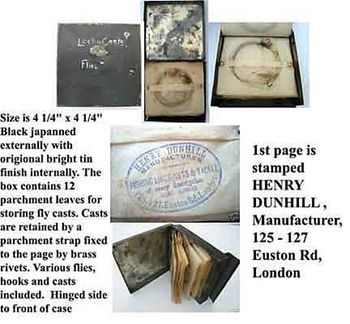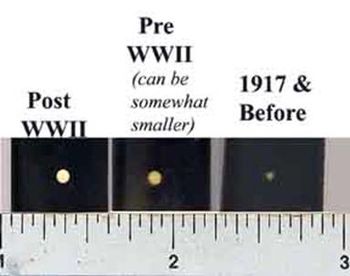The Earliest Dunhill?
Written by John C. Loring
Contributed by Yang Forcióri
The Dunhill retail history dates to early 19th century London where Alfred’s great grandfather was a cloth and dry goods dealer, the family living above the shop. The next generation saw Alfred’s grandfather make his mark as a coal merchant and sack maker, his family still living above the shop. But during the second half of the 19th century Henry, Alfred’s father, was able to move his family into a free standing house and by 1885 had expanded the sack making business to canvas, tarpaulin, spring shop blinds, ropes, mats, harness and horse clothing of every description at 125-127 Euston Road. Fifteen year old Alfred joined his father there as an apprentice in 1887. Comparing son to father, clearly Alfred shared Henry’s drive to expand the family business, but it was Alfred who sought to serve the upper rather then the working classes, opening up DUNHILL MOTORITIES to cater to wealthy automotive enthusiasts in 1893.
One never knows what one will find on eBay, but since I had never even heard of a surviving Dunhill product dating to before Alfred’s proprietorship I caught my breadth when my weekly eBay search came upon a battered metal trout fly case bearing the stamp of HENRY DUNHILL at the 125-127 Euston Road address. This unassuming piece most likely dates to the late 1880’s perhaps reflecting apprentice Alfred’s initials efforts to direct the family business toward the upper classes. In any event it certainly is one of the earliest surviving Dunhill products.
Early Dating Refinement
Since 1918 Dunhill has stamped its smooth finished pipes with a date code (non numeric through 1921 and numeric from 1922 forward) that allows us to determine the year of production. But for the initial years of production, 1910 – 1917, when Dunhill wasn’t concerned with being able to determine when a pipe was produced, save for what can be deduced from various patent stampings, dating with any specificity has been beyond our grasp. Recently, however, fellow collector, Kevin Chapman, turned his attention to the bits of those early pipes and what he found now allows us to date those early pre-date code pipes with a bit more specificity.
What Kevin spotted was that while the undersides of most early Dunhill pipe bits are either unstamped or stamped “REG. No [over] 654638”, some are stamped “PROV. PRO [over] 2983/16”. The “/16” dates Dunhill’s application for what became the Registration Number bit stampings to 1916 and from that we can deduce that the Registration was granted circa 1917. (Dunhill bits had a Registration Number stamping through circa 1933.)
Further, armed with this new information together with pipes in hand, we can now date the end of the use of the original small White Dot on bits also to circa 1917.
Putting this all together with what we had already known, we can now date Dunhill pipes by year back to at least 1916, as set forth in the following chart for pipes stamped DUNHILL [over] DUKE ST S.W.]:
__________
- No "INNER TUBE" or patent stamp & no bit stamp [no such pipe has yet been seen] -- 1910 - 1912
- 1912 patent stamp, small white dot & no underside bit stamp* -- 1912 - 1916
- 1914 patent stamp, small white dot & no underside bit stamp* -- 1914 - 1916
- 1915 patent stamp, small white dot & no underside bit stamp* – 1915 – 1916
[PROVISIONAL PROTECTION BIT STAMP INTRODUCED SOMETIME IN 1916 & REPLACED BY REGISTRATIONNUMBER BIT STAMP SOMETIME IN 1917]
- any patent stamp, small white dot & PROV.PRO underside bit stamp -- 1916 - 1917
- any patent stamp, small white dot & REG.No underside bit stamp -- 1917
[MEDIUM WHITE DOT REPLACES SMALL WHITE DOT SOMETIME IN 1917]
- any patent stamp, medium white dot & PROV.PRO underside bit stamp -- 1917
- patent stamp, medium white dot & REG.No underside bit stamp -- 1917 - 1918 (through October) (also for standard "A" ‘Duke ST’ pipes, an "Ao" stamp indicates June - October 1918)
__________
|*When using this chart it is important to remember that underside bit stamps are easily buffed off and bits may be replaced.
It would also appear that two other early nomenclature variations have no dating significance. First, on some pipes the INNER TUBE stamp is found without surrounding quotes and on others with such quotes - “INNER TUBE”. It would appear however, that this is simply a question of the patent stamp used, specifically “INNER TUBE” for pipes stamped with the 1912 patent and INNER TUBE for pipes stamped with the 1914 or 1915 patent. Second, it would appear that the alignment of DUNHILL [over] ] DUKE ST S.W. is random.

